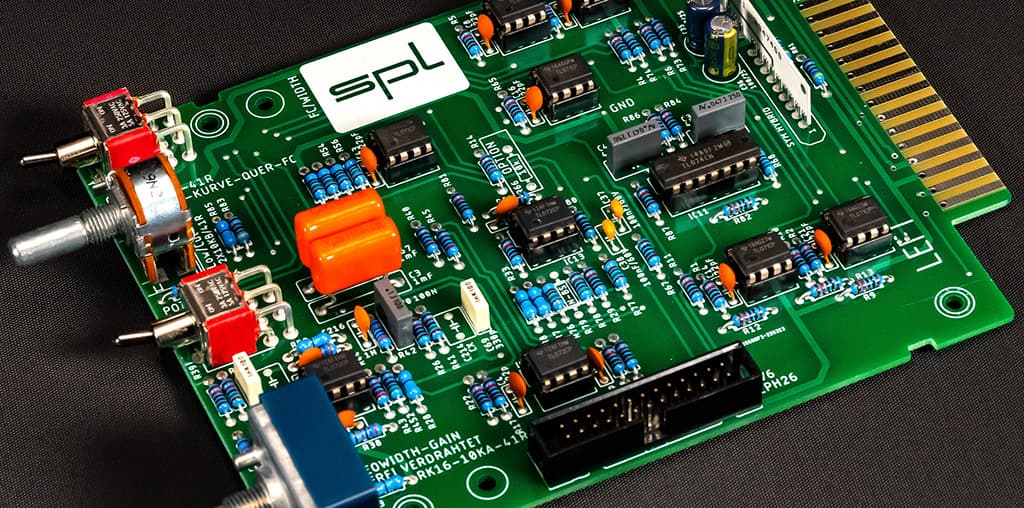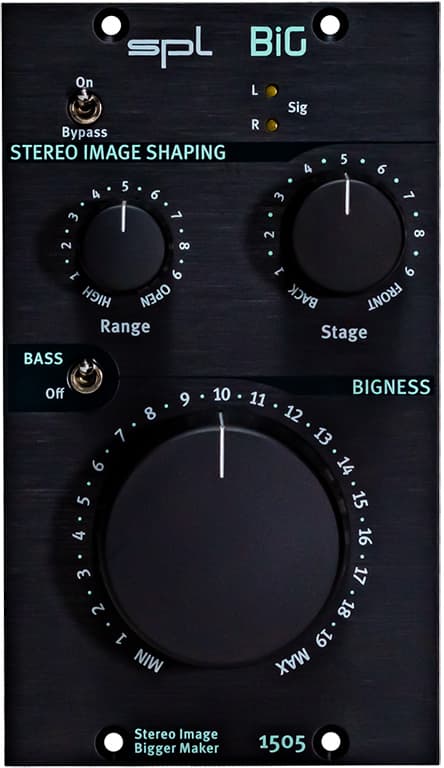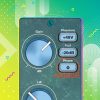
Review: SPL BiG 500
SPL’s 500 series stereo tool is big on width, yet small in size.
SPL is no stranger to stereo enhancement or harmonic excitement processing, so it makes good sense that it should release a standalone 500 series model that takes on both these roles. With just three continuously variable controls and a couple of switches on the double-width faceplate the BiG is sparsely populated by the standards of this format. Make no mistake though, the sound that this unit delivers is certainly not shy, nor is it a one-trick pony. The BiG also sports what may well be the single largest rotary knob in the entire 500 series universe.
IT TAKES THREE TO TANGO
SPL is reluctant — both in the printed manual and across the internet — to provide technical details of what is going on with the processing used in the BIG. You really need to embrace its somewhat wilful parameter names and secret-audio-sauces and just start tweaking. When you do, the SPL BiG proves itself to be a deceptively complex and useful tool.
The ‘Range’ knob is effectively something between a high pass filter and a standard frequency control, and the ‘Stage’ knob determines how much the effect is pushed to the front or back of the mix. They are designed to be used in tandem and each affects the other. The ‘Bigness’ control then boosts the overall effect of these by a little or a lot relative to the dry signal.
Users of SPL’s older sibling, the Stereo Vitalizer, will be familiar with some of this topology although the BiG does things a little differently, both in terms of operation and sonics. Strapped across a mix bus the effect is most certainly ‘big’ and bold. Starting with ‘Range’ set counter-clockwise near the maximum ‘High’ setting and ‘Stage’ set clockwise to about three o’clock it’s immediately obvious when you turn up the ‘Bigness’ control even just a little — say, 1 or 2 on the dial — that something quite significant is happening to the stereo imaging. It only gets more dramatic from there.
Once ‘Bigness’ gets pushed above halfway there’s noticeable harmonic excitement in the upper frequencies, the stereo image gets wider and louder at the sides, and stereo effects such as reverbs and time-based modulations become more audible. It’s a bit like listening to your mix through one set of speakers while someone takes a feed of your mix, applies some stereophonic excitement to it, sets up another pair of speakers outside yours and slowly turns them up.
LARGER THAN LIFE
Moving the ‘Stage’ control clockwise towards the ‘Open’ end and pushing ‘Bigness’ up towards 10 leads to some pretty nasty distortion artefacts, but also allows you to really hear what parts of the audio are being affected the most. Turning the ‘Range’ control clockwise moves the emphasis of the effect down into the midrange and the effect becomes more full-bodied. Here you can hear the weight of a piano, the guts of an electric guitar tone, or vocal really push through in a widescreen stereo way. It’s really quite a dramatic recasting of the presentation of the mix even at lower settings, so a fair bit of caution needs to be exercised when using this unit in a mix bus context.
I often found myself flicking my mix into mono to check what was being added to the sides of the mix. When the overall volume of the mix in mono started getting dwarfed by the stereo version I knew I’d gone too far. Toggling the ‘Bypass’ switch regularly is also a good idea. A more subtle version of these effects is available when you move the ‘Stage’ control counter-clockwise towards the ‘Back’ setting. This damps down the reverbs and other mix effects and tightens up the sound making a less dramatic impact on the overall mix. The upper frequencies are de-emphasised here and more natural widening effects are available.
NEED TO KNOW
SPL BiG 500
500 Series — Stereo Image Shaping
Pushing just a few mix elements out hyper-wide is an old trick but the SPL BiG makes this feel new again

ON THE DOWN LOW
When the ‘Bass’ switch is engaged the BiG also provides a nice strong boost in the lower frequencies that really does thicken up a mix. It’s a smooth and tasteful extension low down and I found it very helpful in balancing the higher frequency emphasis of the ‘Range’ and ‘Bigness’ controls to achieve either a more uniform ‘embiggening’, or a sonically pleasing ‘smiley-face’ EQ curve. The ‘Bass’ enhancement is a very handy addition to the unit and complements the other parameters well.
EARS WIDE OPEN
Initially I thought that the SPL BiG would be the perfect stereo mix-bus tool, but after working with it for a while I discovered other workflows that arguably make better use of its aggressive nature. In the role of parallel signal processor I found the BiG to be very effective in spreading the stereo field and adding heft and character to a full mix without any noticeable phase artefacts. Working in this way with the BiG — as I often do with the Stereo Vitalizer — I got some very tasty results. Bringing the processing up on a pair of faders allowed me to be as subtle or aggressive as I wanted either in parallel to the whole mix or by selecting only certain mix elements.
Stripping things back further, I experimented with processing only keyboards, strings, or backing vocal stems through the BiG and loved how this approach allowed me to really push certain characteristics of these sources. The power and drive of a low rhythm piano track and the airy highs of female backing vocals were real highlights here. Pushing just a few mix elements out hyper-wide is an old trick but the SPL BiG makes this feel new again. The tonal and stereophonic processing available gives users a lot of options in terms of how these elements project.
SUPERSIZE ME
SPL’s BiG challenges you to extend your mixes beyond the standard boundaries of the stereo field. While there are dangers out there in ‘the beyond’, the rewards can be great and the BiG delivers a wide variety of sonically pleasing colours with just a few well-selected controls. The quality of the sound is undeniable, but while the aggressive nature of the processing may be too much for some situations, there are others where it brings a whole new raft of possibilities into play. The stereo spreading and bass enhancement really do add new dimensions to a mix and, when used judiciously, can help take your sounds to the next level.
























RESPONSES